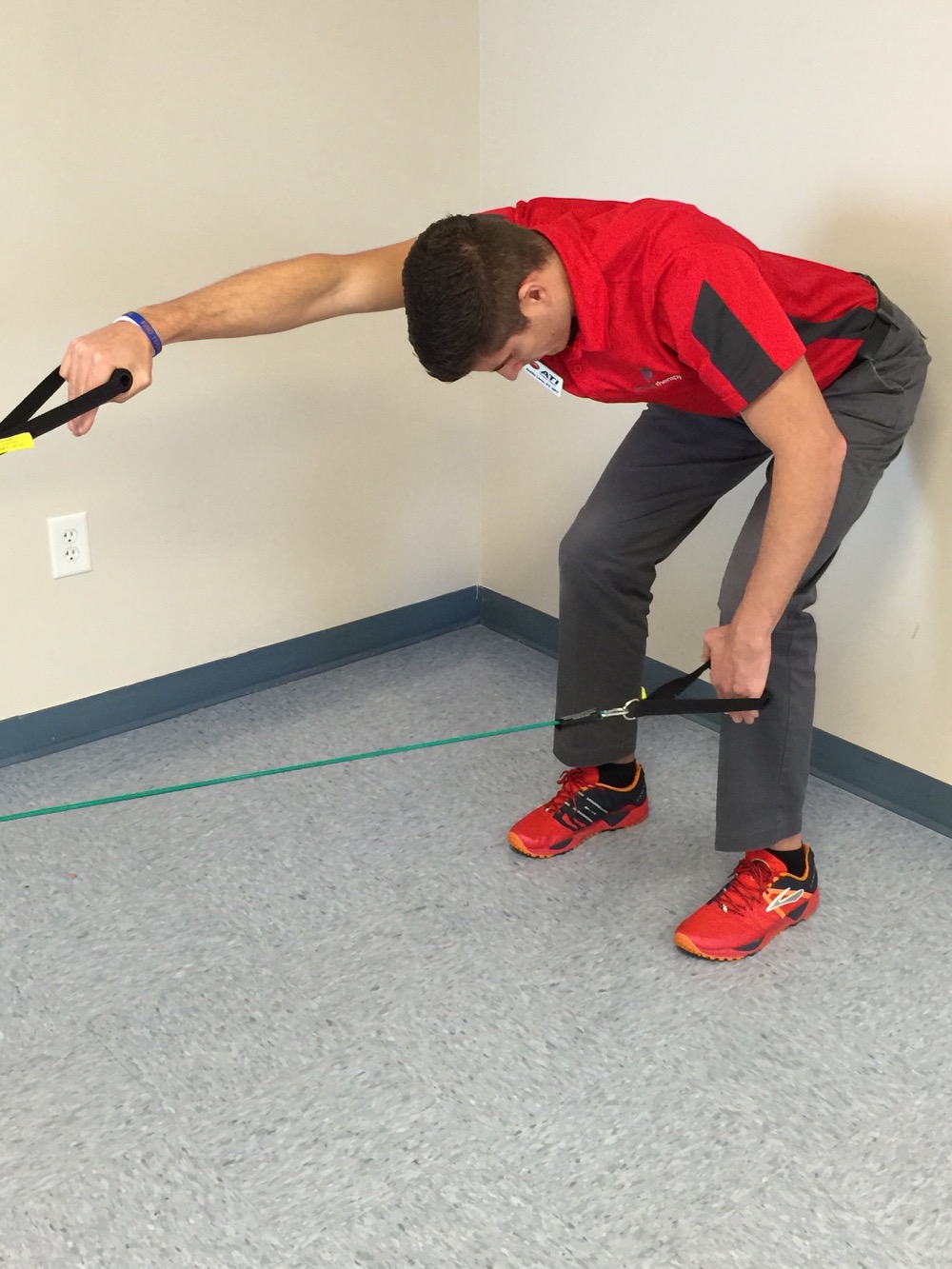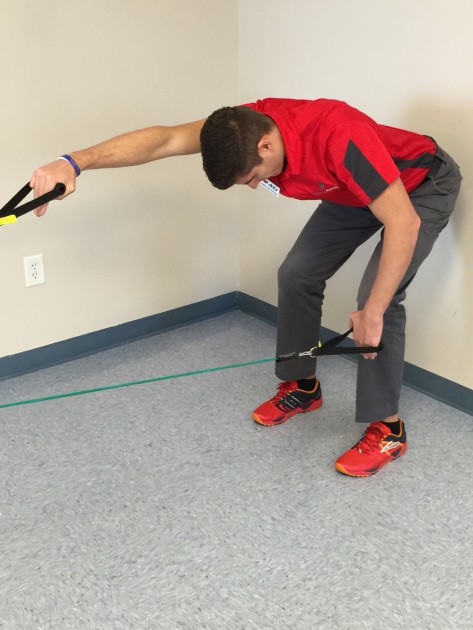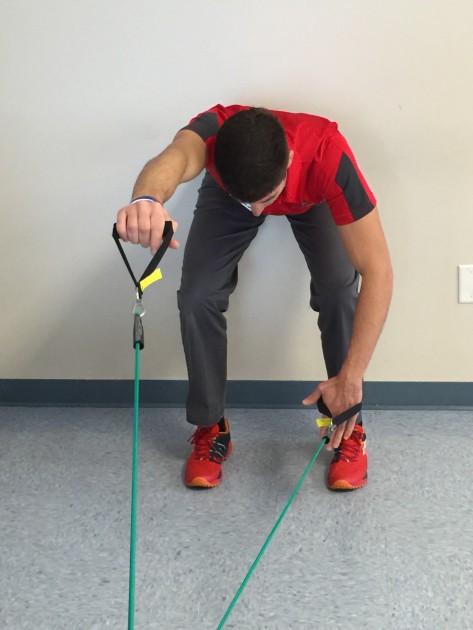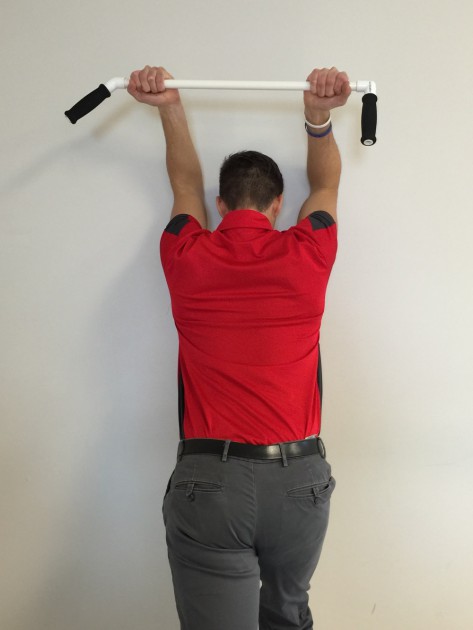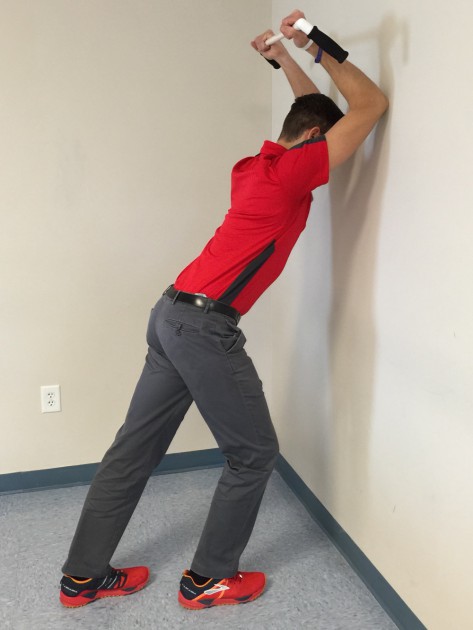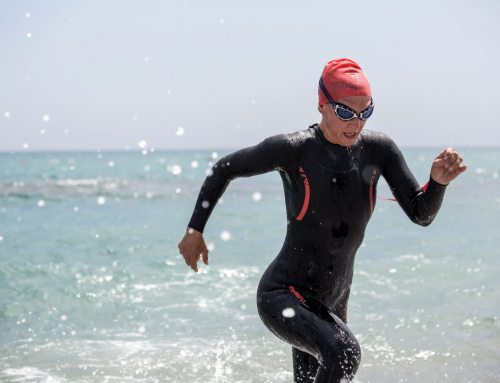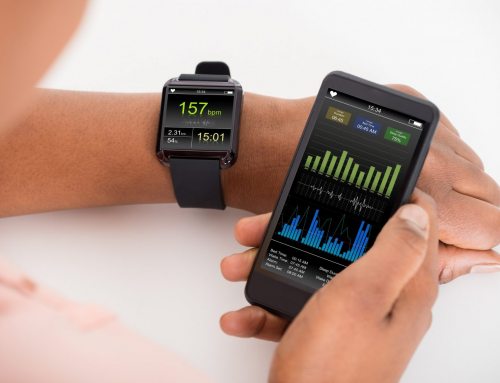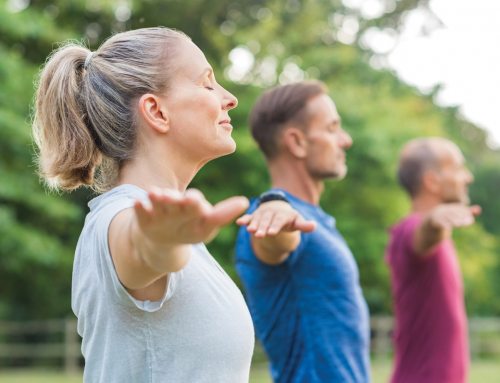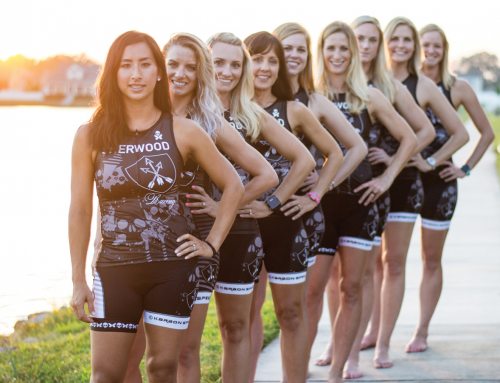By Justin Loss, PT, DPT
For many triathletes, unless you grew up a swimmer, the swim can be the most challenging event in a triathlon. This challenge isn’t exclusive to racing, it also applies to training. With running and biking, many exercises and stretches have become common knowledge; such as squats, lunges, glute bridges, dynamic warm-ups, static stretching routines, and foam rolling. But if we turn our attention to swim specific exercises what images do we conjure up? Maybe some pull-ups or lat pull-downs? Perhaps even arm circles? However, more often than not, when I ask most triathletes about swim specific exercise I am met with blank stares. As with most sports you could fill an entire book on building swim specific strength. However today we will focus on just one very important muscle involved in the freestyle swim stroke: the latissimus dorsi (LD).
The LD is the largest upper body muscle involved in swimming. While it is the primary source of power during the swim stroke, it can also be the culprit in limited shoulder mobility. Therefore, it is critical to balance strength and mobility to improve performance and help prevent injury. Since many exercises can target the LD, we should ensure our exercises are as sport specific as possible. For the LD this means working the muscle in an alternating unilateral fashion in a horizontal body position where it is utilized when swimming. Let me introduce you to the Bent Over Swimmers Pull.
- Endurance focus: 3 sets of 15 repetitions
- Exercise bands or pulley weights can be utilized
Exercise keys to success:
- Start with a fully extended arms
- As you pull through, the shoulder and elbow should maintain ~45 degrees of bend (see picture)
- Perform in a rhythmic alternating swimming pattern
To maintain or improve shoulder mobility, I recommend performing the LD Stretch pictured below. Gripping the dowel in this manner places the shoulder in an externally rotated position (hands slightly wider than elbows). Doing so takes up slack in the LD (an internal rotator), allowing the LD to be stretched with less shoulder excursion and hopefully less stress on the shoulder joint itself.
- Hold each stretch for up to 2 minutes
- Push chest forward and slightly downwards
Integrating these simple exercises into your routine may help keep you out of the physical therapist office and in the water where you belong. Happy training and racing!
# # #
Justin Loss is a physical therapist with ATI Physical Therapy in Chapel Hill, NC. He treats triathletes across all three sports with a focus on lower extremity injuries. Justin has presented research nationally on patellofemoral pain in runners and is a graduate of East Carolina’s physical therapy program. He self-proclaims to be the “most active lazy person there is” because of a slight addiction to TV and endurance sports. Most weekends you can find him, and his fiancé Carli, training, racing, or on the couch binge watching Netflix.


